BOTANICAL
The Initiation of Australian Botany
Selections from Banks’ Florilegium
Engravings from “Banks’ Florilegium”, a record of plants collected by amateur botanist Joseph Banks and his team on Captain James Cook’s first voyage around the world (1768-1771).
Banks’ Florilegium
Banks’ Florilegium comprises the 743 botanical engravings of plants collected by Sir Joseph Banks and Dr Daniel Carl Solander in Madeira, Brazil, Tierra del Fuego, the Society islands, New Zealand, Australia and Java on Captain James Cook’s first voyage around the world in His Majesty’s Bark Endeavour in 1768 – 1771.
Upon his return to England in 1771, Banks ambitiously endeavoured to produce a complete scientific record of this “immensely large” haul of botanical specimens unknown to European “gentleman scientists.” Banks envisioned to release no less than fourteen volumes as Endeavour Florilegium.
Banks invested a small fortune to achieve this feat over thirteen years, while Daniel Solander prepared the accompanying botanical texts. Banks employed five artists to complete Sydney Parkinson’s detailed field sketches of the fresh specimens and eighteen engravers to create 743 exquisite copper plate line engravings from Parkinson’s completed watercolour illustrations.
Legacy
Although intended as a magnificent contribution to science, the Florilegium was never published in Banks’ lifetime. Remarkably, it took another 200 years until the engravings were printed for the first time in their entirety and in colour as intended.
London print company Alecto Historical Editions took ten years to complete the project (1980-89), after the unpublished plates were found encased in their eighteenth century wrappers in a cupboard in the Botany Library of the Natural History Museum in London.
The dedication and effort to realise Banks’ vision made it one of the greatest printing projects ever undertaken in the Western world.
A selection of these will be on display.
banner image credit:
Banksia ericifolia, colour engraving and etching (à la poupée) after water colour by John Frederick Miller 1773 and drawing by Sydney Parkinson 1770, engraving by R Hughes 1986 after Daniel MacKenzie and Thomas Scratchley. (c) Alecto Historical Editions / Trustees of the Natural History Museum. Photography by James Hughes, 2024. Private collection.




